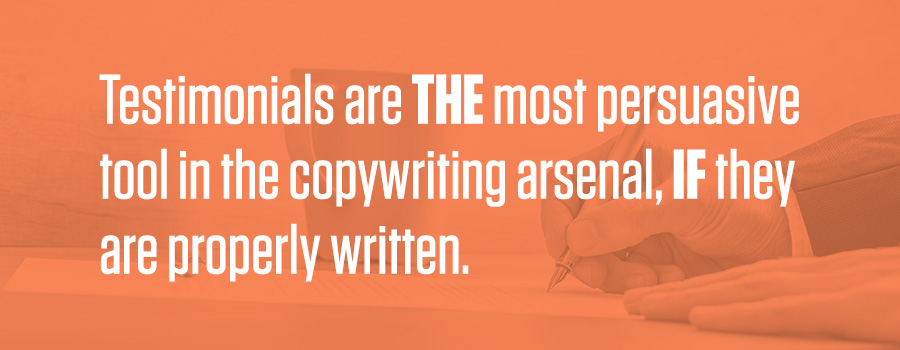
What SPECIFICALLY Makes Lead Generation Content Persuasive
Article after article talks in generalities about the need for persuasive content. But these articles have an inherent contradiction: content that talks in generalities isn’t persuasive. B2B and B2C website visitors know a phony sales pitch when they hear it. Overstatements, general assertions and unsupported claims may sound good to marketers, but set off alarms with human readers. They suggest the company/product/service is unreliable, too good to be true, or an out-and-out scam.
Not persuasive.

To make people interested in your product or service, and to get them to convert, here are specific things you should do with your content:
- State facts. Not “lowest prices in town,” but instead, “We’re 5 percent less than these three products (and list them).” Stating facts overcomes skepticism.
- Show data sources. If you claim, “Seventy percent of consumers prefer our product,” show the source of that data. Did it come from a survey of 10 customers or 10,000? Data based on shaky foundations are the bane of Internet marketing. And customers, having been once burned, are 10 times more skeptical of accepting factual claims unless they are convincingly supported. Showing data overcomes skepticism.
- Solve problems. I read something recently that really hit home (wish I could remember where) to the effect that a business should sell solutions to problems, not products. Great advice and common sense, but seldom followed in lead generation copy. Your product saves money — everybody says that. Instead, talk about what customers can do with the money they save — pay bills on time, save for college tuition, etc. Solving problems in marketing content is persuasive both because it helps customers envision a better life with your stuff, and also because so few companies do it. Solving problems overcomes indifference.
- Edit the copy. How can you handle a $30,000 renovation if you can’t punctuate a sentence … or worse, misspell “renovation?” Grammatical errors and awkward, ambiguous phrasing undermines otherwise effective copy and costs companies leads. Not only does unedited copy cost leads, it costs companies the best leads — people who are reading that carefully care about what they are reading on your website. Editing copy overcomes skepticism.
- Use testimonials. Testimonials are THE most persuasive tool in the copywriting arsenal, IF they are properly written. Testimonials overcome both indifference and skepticism, by revealing value to indifferent readers and establishing credibility with skeptical readers. Key specifics to creating a great testimonial:
- Attribution — Display the individual’s name, company name, title.
- Specificity — Provide facts and examples, which make it easy for readers to identify with the situation.
- Brevity — Make testimonials easy to scan and read. The more you write, the more likely a reader will find something that turns him or her off.
- Focus — Great testimonials highlight one or two critical benefits of the product/service. Rambling, gushy endorsements don’t really communicate much value.
Over to You
In my mind, these are the critical elements of persuasive lead generation content. But I’m sure I’ve missed plenty! What elements do you think are important?
Learn More: Should My Business Be Doing Content Marketing?



